Venture back to the roaring age of the 1990s, a time when the automotive world was ablaze with innovation, power, and an unrelenting pursuit of performance. The echoes of high-revving engines and the sight of sleek, aerodynamic designs marked an era that would forever be etched in the hearts of car enthusiasts.
In this article, we embark on a nostalgic journey to revisit the unforgettable '90s performance cars that not only defined an era but also laid the foundation for the future of sports cars.
From iconic Japanese legends to European powerhouses, these machines were more than metal and rubber – they were a testament to the art of engineering and the thrill of the open road.
Related Reading: Top 5 Fantastic ‘90s Performance Cars We Will Never Forget (And Neither Should You)
1. Unforgettable ‘90s Performance Car: Mitsubishi Eclipse GSX
- Production Years: 1989–2012
- Horsepower: 276 HP
- Top Speed: 150 MPH
- 0-60 MPH Acceleration: 6.8 Seconds
- Used Price: $9,439–$10,490 (Via iSeeCars)
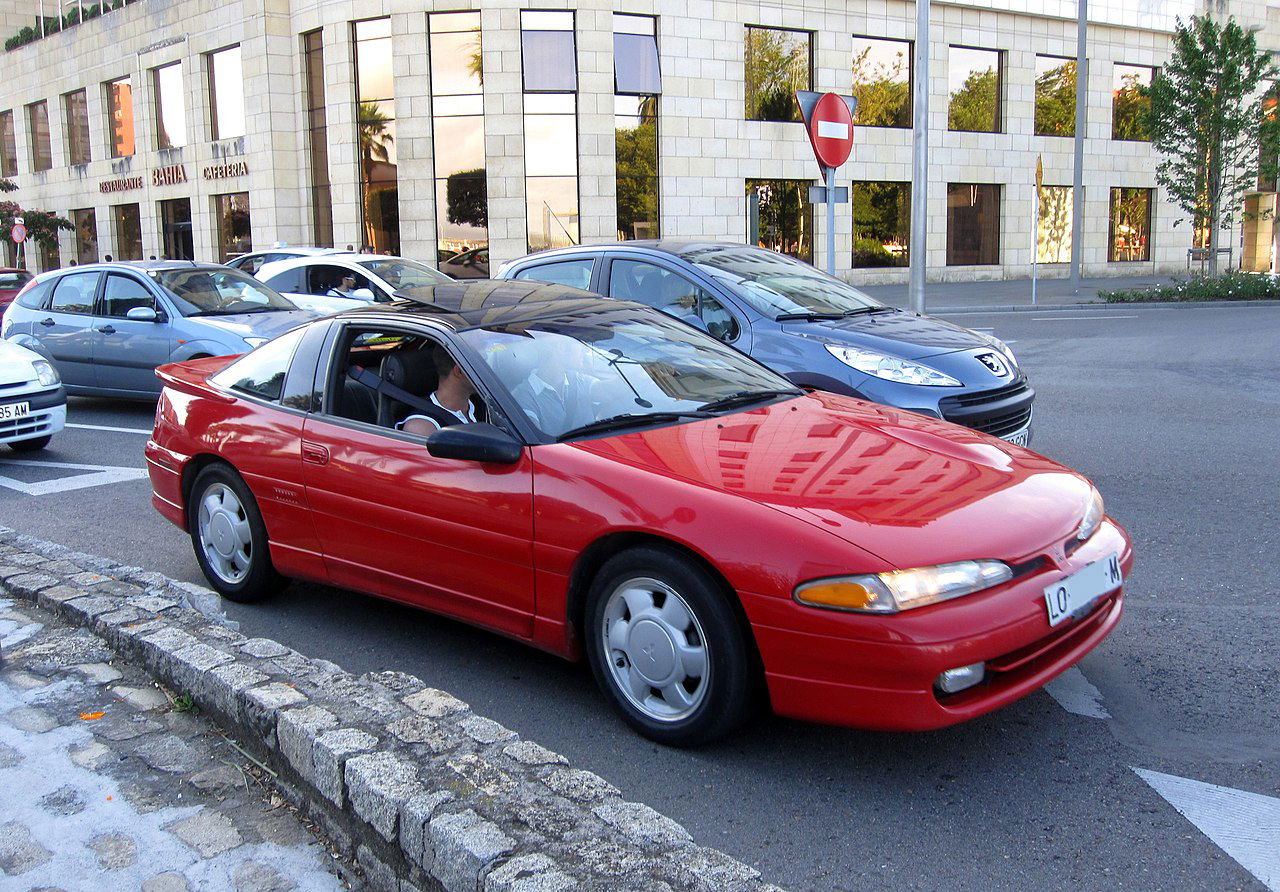
The Mitsubishi Eclipse GSX is a high-performance sports car produced by Mitsubishi from 1989 to 2012. Known for its sleek design, turbocharged power, and all-wheel-drive system, the Eclipse GSX earned a reputation as a capable and exhilarating sports coupe. Let’s take a closer look at the Mitsubishi Eclipse GSX:
Mitsubishi Eclipse GSX’s Engine
The Eclipse GSX’s power came from a turbocharged 2.0-liter inline-four engine. In the earlier generations, it featured a 4G63 engine, while later models relied on the popular 4G63T engine.
These engines were known for their robust performance and tunability. Power output varied across different generations and model years, ranging from approximately 195 to 276 horsepower, depending on the specific variant.
Mitsubishi Eclipse GSX’s Turbocharging
The Eclipse GSX’s turbocharger system, particularly in the 4G63T engine, provided a significant power boost. The turbochargers helped enhance low-end torque and overall power delivery, resulting in quick acceleration and impressive performance.
Mitsubishi Eclipse GSX’s Drivetrain
The Mitsubishi Eclipse GSX’s advanced all-wheel-drive system, known as Active Center Differential (ACD), distributed power between the front and rear wheels to optimize traction and enhance handling.
The AWD system provided exceptional grip, particularly in challenging road conditions, and contributed to improved stability and cornering capabilities.
Mitsubishi Eclipse GSX’s Transmission
The Eclipse GSX came with a 5-speed manual transmission as standard, although some later models had the option of a 4-speed automatic transmission. The manual gearbox is the preferred power transmitter for drivers who want to fully exploit the car's performance potential.
Mitsubishi Eclipse GSX ‘s Acceleration And Top Speed
The Eclipse GSX delivered swift acceleration and could make the 0-60 mph times in the range of 6 to 7 seconds, depending on the model year and modifications. The top speed varied, but it typically reached around 140 to 150 mph.
Mitsubishi Eclipse GSX’s Handling And Suspension
The Eclipse GSX featured a sport-tuned suspension system that provided a balance between comfort and performance. The chassis was well-tuned, offering responsive and precise handling characteristics. The car's blend of low center of gravity and AWD system contributed to excellent stability and cornering capabilities.
Mitsubishi Eclipse GSX’s Braking Power
The Eclipse GSX benefited from a capable braking system featuring ventilated disc brakes on all four wheels. The brakes provided strong and consistent stopping power, ensuring confidence-inspiring deceleration.
Mitsubishi Eclipse GSX’s Tunability And Aftermarket Support
The Eclipse GSX has a strong following in the automotive aftermarket. Its robust engine, drivetrain, and enthusiastic owner base have resulted in numerous aftermarket upgrades and modification possibilities. This has allowed owners to further enhance and personalize the car to their preferences.
2. Unforgettable ‘90s Performance Car: Toyota Celica All-Trac Turbo
- Production Years: 1988–1999
- Horsepower: 200 HP
- Top Speed: 145 MPH
- 0-60 MPH Acceleration: 6 Seconds
- Used Price: $6,540–$6,995 Average Price (via iSeeCars)
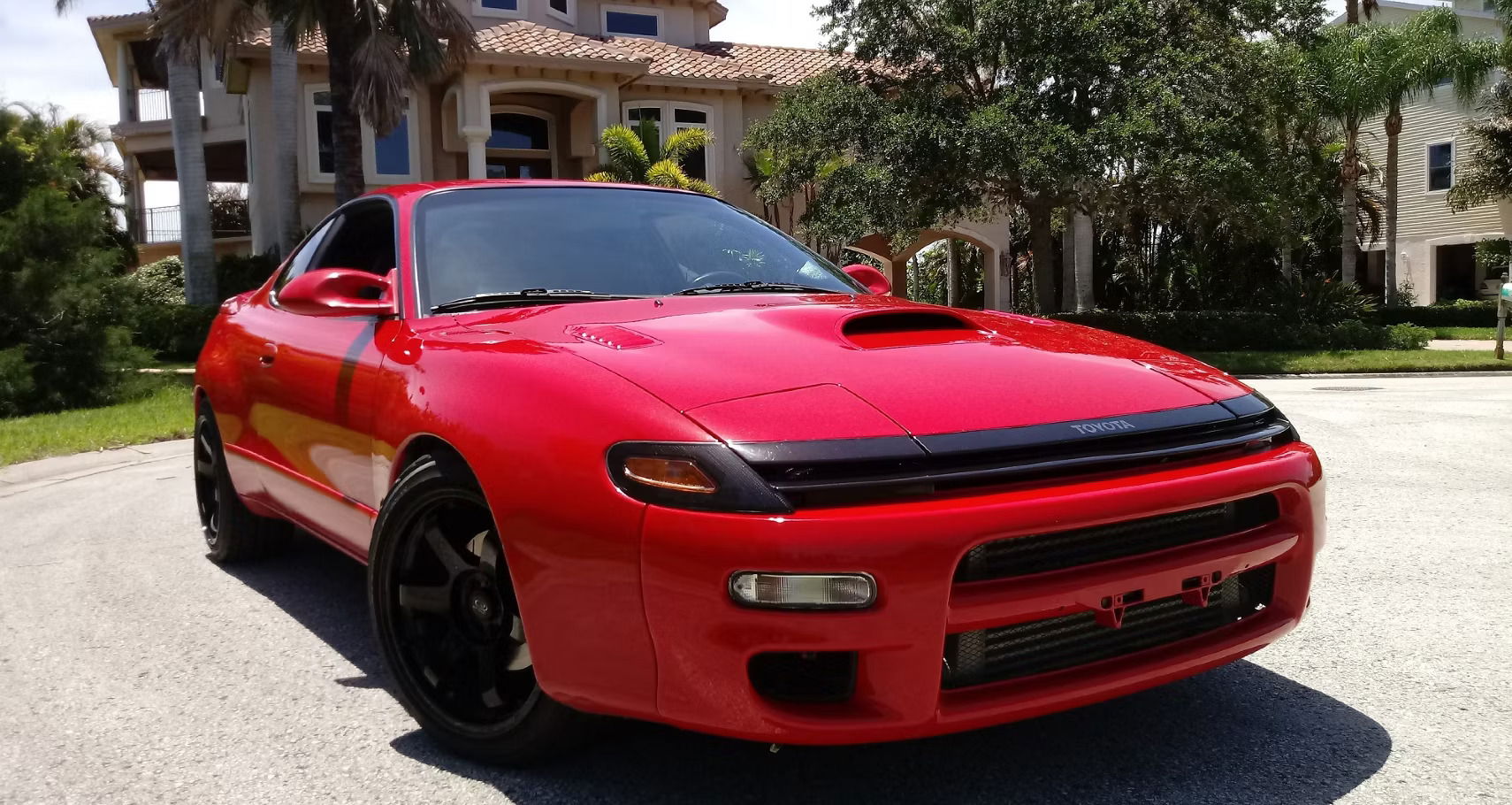
The Toyota Celica All-Trac Turbo was a high-performance sports coupe produced by Toyota from 1988 to 1999. It was an iconic model known for its rally-inspired features and exceptional performance capabilities. Let’s take a closer look:
The Toyota Celica All-Trac Turbo Engine
The Celica All-Trac Turbo derived motivation from a turbocharged 2.0-liter inline-four engine. In its early years of production, it produced around 190 horsepower and 190 lb-ft of torque, while later models received a power boost to 200 horsepower and 200 lb-ft of torque.
Toyota Celica All-Trac Turbo Drivetrain
The "All-Trac" designation in the Celica's name referred to its advanced all-wheel drive system, a significant selling point for the car.
The AWD system distributed power to all four wheels, improving traction, stability, and handling, particularly in adverse driving conditions. It enhanced the car's performance on both dry and slippery surfaces, making it a popular choice among enthusiasts and rally drivers.
Toyota Celica All-Trac Turbo’s Performance Suspension
The Celica All-Trac Turbo featured a sport-tuned suspension system delivering excellent handling and cornering capabilities. It had stiffer springs, upgraded shock absorbers, and thicker stabilizer bars compared to the standard Celica models.
Combining the suspension setup with the AWD system delivered exceptional road-holding abilities and improved control.
Toyota Celica All-Trac Turbo’s Transmission Option
The Celica All-Trac Turbo initially used a five-speed manual transmission to satiate drivers' fantasies of fully exploiting the car's power and performance. However, Toyota eventually introduced a four-speed automatic transmission as an option for those seeking a more relaxed driving experience.
Toyota Celica All-Trac Turbo’s Acceleration And Top Speed
The Celica All-Trac Turbo could deliver impressive acceleration figures thanks to its turbocharged engine plus AWD system. It could reach 0 to 60 mph in around 6 seconds, making it one of the fastest cars of the 1990s.
The top speed was electronically limited to approximately 140 to 145 mph, depending on the model year.
The Toyota Celica All-Trac Turbo’s Rally Heritage
The Celica All-Trac Turbo drew inspiration from Toyota's success in the World Rally Championship (WRC). It shared many components and design cues with the rally version of the Celica, including the AWD system and other performance enhancements.
This rally heritage boosted the car's appeal and popularity among motorsport enthusiasts.
Toyota Celica All-Trac Turbo’s Reliability
Toyota's reputation for reliability extended to the Celica All-Trac Turbo. The car was known for its robust build quality and durability. Properly maintained examples have proven highly reliable and capable of high mileage without significant issues.
3. Unforgettable ‘90s Performance Car: BMW M3 Lightweight
- Production Years: 1995
- Horsepower: 240 HP
- Top Speed: 137 MPH
- 0-60 MPH Acceleration: 5.5 Seconds
- Market Valuation: Up To $385,000 (Via ConceptCarz)
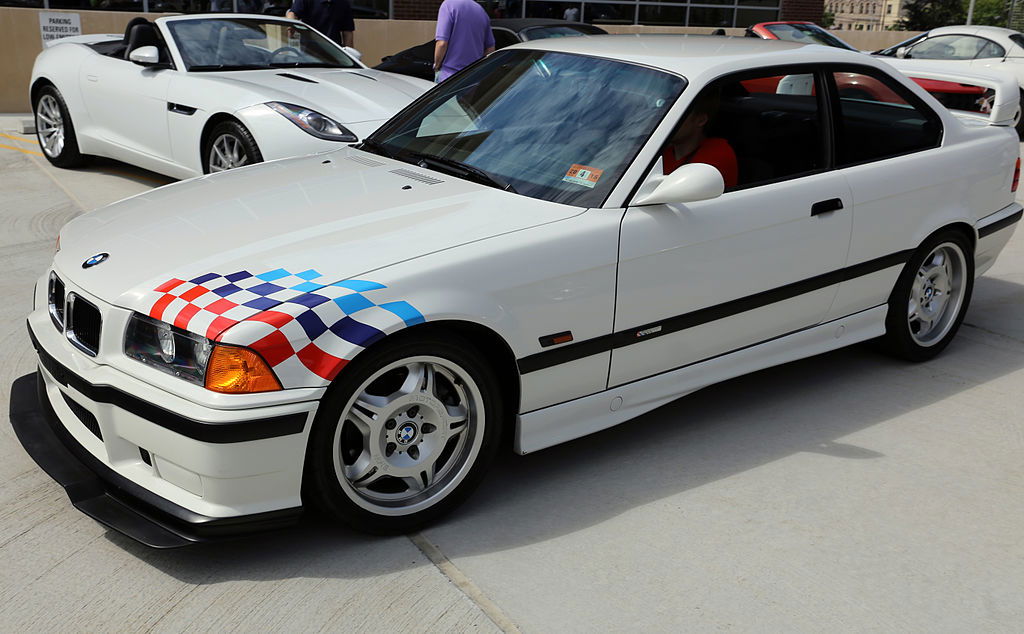
The BMW M3 Lightweight, also known as the E36 M3 Lightweight, is a special edition performance variant of the BMW M3 produced for the 1995 model year.
Its design focused on reducing weight and improving performance for dedicated track use. Let’s dive deeper into the M3 Lightweight’s performance characteristics:
The BMW M3 Lightweight’s Weight Reduction
The M3 Lightweight got engineered specifically to shed excess weight compared to the standard M3. It featured several weight-saving measures, including a carbon fiber-reinforced plastic (CFRP) front bumper, lightweight aluminum doors, lightweight side and rear windows, reduced sound insulation, and a stripped-down interior.
These modifications resulted in a weight reduction of approximately 200 pounds (90 kilograms) compared to the regular M3.
The BMW M3 Lightweight’s Engine
The M3 Lightweight’s propulsion power came from a 3.0-liter inline-six engine dubbed the S50B30US. It produced 240 horsepower and 236 lb-ft of torque, the same as the standard M3 of that era.
However, the weight reduction allowed the Lightweight to achieve a better power-to-weight ratio, resulting in improved acceleration and overall performance.
BMW M3 Lightweight’s Performance Figures
The M3 Lightweight offered impressive performance figures for its time. It could accelerate from 0 to 60 mph in approximately 5.5 seconds, with a top speed electronically limited to 137 mph.
Although the Lightweight's straight-line acceleration figures were similar to the standard M3, its reduced weight and improved handling made it the more engaging and thrilling M3.
The BMW M3 Lightweight’s Suspension And Handling
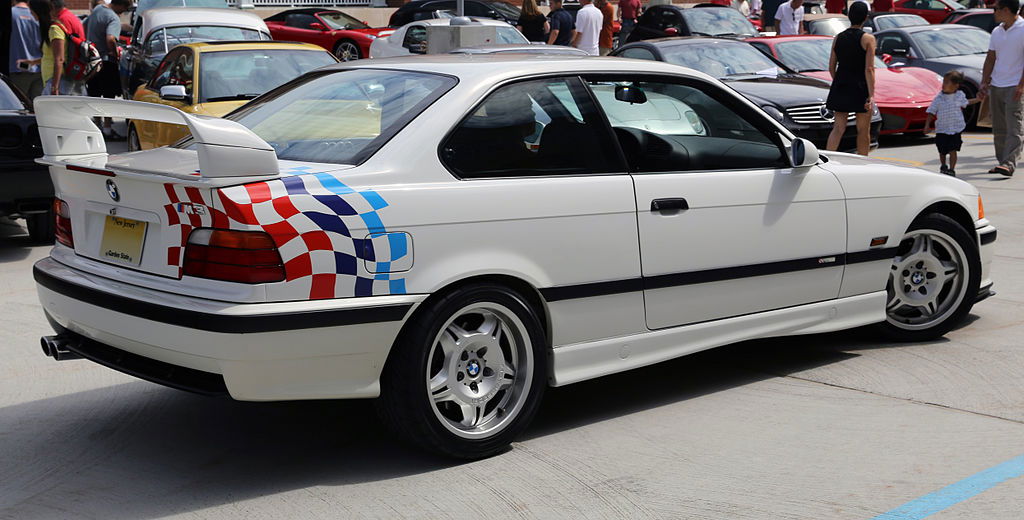
The M3 Lightweight featured a sport-tuned suspension system with stiffer springs, shocks, and anti-roll bars compared to the standard M3. It also had a limited-slip differential to enhance traction and improve cornering ability.
The suspension enhancements, combined with the reduced weight, resulted in improved handling and responsiveness, resulting in an agile and track-focused ‘90s performance car.
BMW M3 Lightweight’s Braking System
To cope with the increased demands of track driving, the M3 Lightweight got equipped with an upgraded braking system comprising larger front brake rotors and calipers borrowed from the more powerful E34 M5.
This setup provided enhanced stopping power and better heat dissipation, ensuring consistent and reliable braking performance during intense track sessions.
BMW M3 Lightweight’s Limited Production
The BMW M3 Lightweight was a rare and exclusive model. Only 125 examples were produced for the U.S. market, making it highly sought after by car enthusiasts and collectors.
The limited production numbers and unique features significantly contribute to its desirability and collectibility. A 2020 sale saw the M3 Lightweight change hands for a respectable $385,000, although ConceptCarz reports an average sale price of $149,357 for the 1995 M3 Lightweight. It fetched an impressive $106,400 in a recent 2023 auction.
Related Reading: Everything You Need To Know About 8 Unfamiliar But Extremely Powerful Cars Only True Gearheads Know About
4. Unforgettable ‘90s Performance Car: Porsche 968 Club Sport
- Production Years: 1992–1995
- Horsepower: 236 HP
- Top Speed: 160 MPH
- 0-60 MPH Acceleration: 6.10 Seconds
- Market Valuation: Up To $792,000 (Via ConceptCarz)
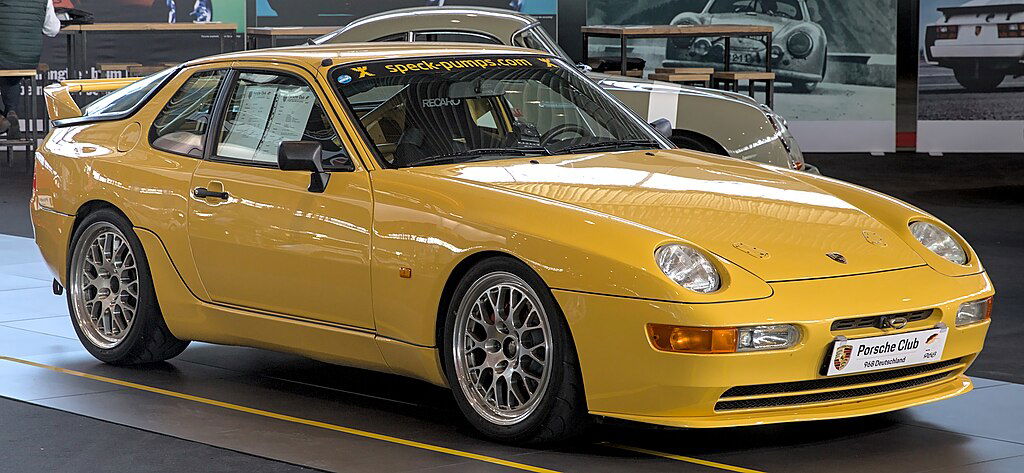
The Porsche 968 Club Sport is a performance-oriented variant of the Porsche 968 produced from 1992 to 1995. Porsche developed it with a focus on reducing weight and enhancing driving dynamics for enthusiasts seeking an exhilarating on-track experience. Here's an overview of the 968 Club Sport’s performance characteristics:
The Porsche 968 Club Sport’s Weight Reduction
The 968 Club Sport incorporated several weight-saving measures to enhance performance. It featured lightweight Recaro bucket seats, reduced sound insulation, deleted rear seats, lightweight door panels, and aluminum front suspension components.
These modifications resulted in a weight reduction of approximately 100 kilograms (220 pounds) compared to the standard 968. This significantly improved the 968 Club Sport’s power-to-weight ratio.
Porsche 968 Club Sport’s Engine
The 968 Club Sport relied on a 3.0-liter inline-four engine called the M44/43. It produced 236 horsepower and 225 lb-ft of torque. While the power output was similar to the standard 968, the Club Sport’s reduced weight achieved improved acceleration and responsiveness. The engine married a close-ratio six-speed manual transmission.
The Porsche 968 Club Sport’s Suspension And Handling
The 968 Club Sport featured a sport-tuned suspension system with stiffer springs, shocks, and anti-roll bars compared to the standard 968. It also had a lower ride height, contributing to improved handling and enhanced cornering capabilities.
The suspension upgrades and reduced weight resulted in sharper and more responsive handling characteristics, making the Club Sport one of the most engaging track performers in the 1990s.
Porsche 968 Club Sport’s Braking System
To match its performance capabilities, Porsche equipped the 968 Club Sport with an upgraded braking system, comprising larger disc brakes with four-piston calipers at the front and two-piston calipers at the rear. This setup provided excellent stopping power and consistent braking performance.
Porsche 968 Club Sport’s Limited-Slip Differential
The 968 Club Sport came standard with a limited-slip differential, which enhanced traction and helped distribute power more effectively to the rear wheels. This feature improved the car's ability to put down power during acceleration and allowed for better control during high-speed cornering, particularly on track surfaces.
The Porsche 968 Club Sport’s Aerodynamic Enhancements
The Club Sport variant featured aerodynamic enhancements, including a front spoiler lip and a fixed rear spoiler. These additions improved high-speed stability and reduced lift, further enhancing the car's overall performance and driving dynamics.
Porsche 968 Club Sport’s Limited Production
The Porsche 968 Club Sport came in limited numbers, with approximately 1,923 units built worldwide. Its exclusivity and track-focused features make it highly desirable among Porsche enthusiasts and collectors.
According to ConceptCarz, $40,320 is the lowest peak price a 1995 Porsche 968 Club Sport has fetched at auction. $88,063 was the peak price for the 1994 model, $516,500 for the 1992 model, and a mouth-watering $792,000 for the 1993 model.
5. Unforgettable ‘90s Performance Car: Volkswagen Corrado VR6
- Production Years: 1988–1995
- Horsepower: 187 HP
- Top Speed: 140 MPH
- 0-60 MPH Acceleration: 7 Seconds
- Market Valuation: $5,500 (2019 Sale Price via ConceptCarz)
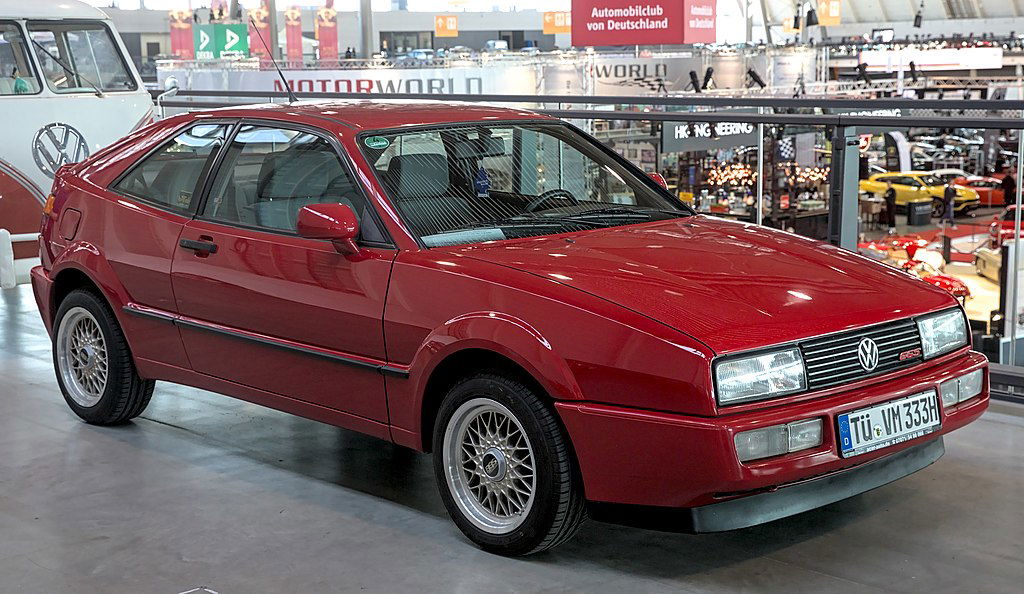
The Volkswagen Corrado VR6 was a sports coupe produced by Volkswagen from 1988 to 1995. It was renowned for its powerful engine, precise handling, and distinctive design. It was initially propelled by the company’s G60 power unit before it got replaced by the narrow-angled VR6 engine. Let’s take a closer look:
The Volkswagen Corrado VR6’s Engine And Performance
The Corrado VR6 got propulsion power from a 2.8-liter narrow-angle V6 engine, commonly referred to as the VR6. This engine featured a unique design with a narrow-angle between the cylinder banks, allowing it to fit into a compact engine bay.
The VR6 engine produced 178 horsepower and 177 lb-ft of torque in its earlier models, while later versions saw power outputs increased to 187 horsepower and 181 lb-ft of torque. Since the VR6 engine provided smooth and linear power delivery, it offered a good balance between performance and everyday drivability.
The Corrado VR6’s Acceleration And Speed
With its powerful engine, the Corrado VR6 was capable of accelerating from 0 to 60 mph in approximately 7 seconds. It had a top speed of around 140 mph, making it a quick and capable sports coupe.
The Volkswagen Corrado VR6’s Transmission
The Corrado VR6 came standard with a five-speed manual transmission, while a four-speed automatic transmission was available as an option for those who preferred automatic shifting.
Volkswagen Corrado VR6’s Suspension And Handling
The Corrado VR6 featured a sport-tuned suspension system, including stiffer springs, upgraded shock absorbers, and larger anti-roll bars compared to the standard Corrado models.
These enhancements improved the car’s tenacity to tackle corners with agility and stability thanks to the improved handling and reduced body roll. The precise and responsive steering further enhanced the driving experience due to the excellent feedback and control.
The Volkswagen Corrado VR6’s Braking
The Corrado VR6 featured ventilated front disc brakes and solid rear disc brakes, providing strong and reliable braking performance. Anti-lock braking system (ABS) was also a standard feature, enhancing the car's overall safety and control under heavy braking.
The Corrado VR6’s Limited Slip Differential (LSD)
Some versions of the Corrado VR6 featured a limited-slip differential. The LSD helped enhance traction and cornering abilities by transferring power to the wheel with more grip, improving overall stability and control during spirited driving.
The Corrado VR6’s Exterior And Interior Design
The Corrado VR6 featured a sleek and aerodynamic design characterized by its sloping roofline, pop-up headlights, and muscular stance.
The interior offered a driver-focused cockpit with supportive sports seats, a leather-wrapped steering wheel, and sporty instrumentation. The build quality and materials used in the cabin were of high standard, providing a comfortable and premium driving environment.